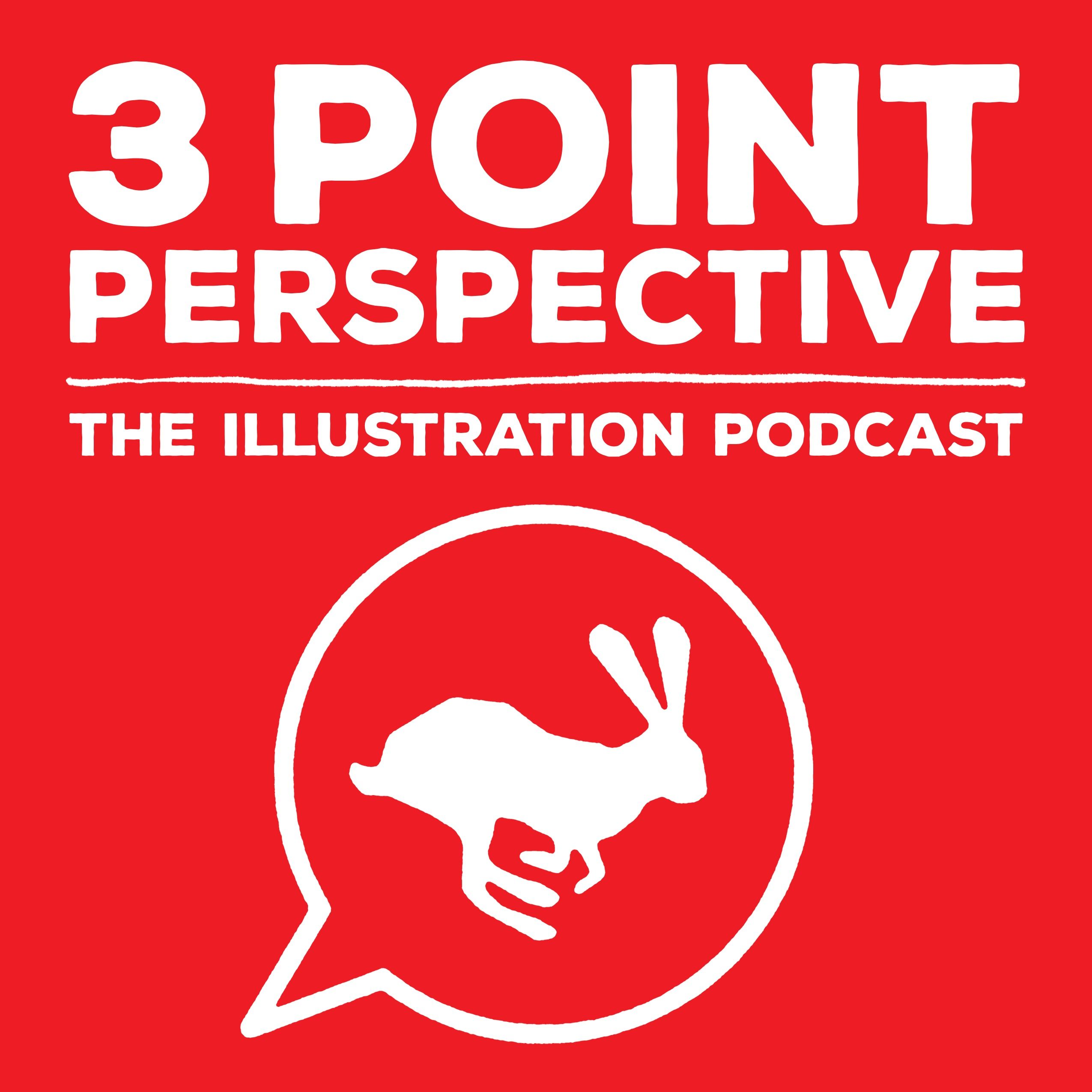

3 Point Perspective: The Illustration Podcast
SVSlearn.com
Illustrators Will Terry, Lee White, and Jake Parker talk about illustration, how to do it, how to make a living at it, and how to make an impact in the world with your art.
Episodes
Mentioned books

Dec 23, 2019 • 46min
The Year in Review
3 Point Perspective Podcast is sponsored by SVSLearn.com, the place where becoming a great illustrator starts!Click here to find the links for this episode and to see this episode's illustration.
3 Point Perspective Podcast is sponsored by SVSLearn.com, the place where becoming a great illustrator starts!Click here for this episode’s links and show notes.

Dec 12, 2019 • 1h 21min
Agents and Reps
3 Point Perspective Podcast is sponsored by SVSLearn.com, the place where becoming a great illustrator starts!Click here to find the links for this episode and to see this episode's illustration.
3 Point Perspective Podcast is sponsored by SVSLearn.com, the place where becoming a great illustrator starts!Click here for this episode’s links and show notes.

Nov 28, 2019 • 1h 9min
Cultivating Creativity
3 Point Perspective Podcast is sponsored by SVSLearn.com, the place where becoming a great illustrator starts!Click here to find the links for this episode and to see this episode's illustration.
3 Point Perspective Podcast is sponsored by SVSLearn.com, the place where becoming a great illustrator starts!Click here for this episode’s links and show notes.

Nov 14, 2019 • 1h 22min
The Best Illustration Assignments
3 Point Perspective Podcast is sponsored by SVSLearn.com, the place where becoming a great illustrator starts!Click here to find the links for this episode and to see this episode's illustration.
3 Point Perspective Podcast is sponsored by SVSLearn.com, the place where becoming a great illustrator starts!Click here for this episode’s links and show notes.

Oct 31, 2019 • 1h 5min
Illustration Horror Stories
3 Point Perspective Podcast is sponsored by SVSLearn.com, the place where becoming a great illustrator starts!Click here to find the links for this episode and to see this episode's illustration.
3 Point Perspective Podcast is sponsored by SVSLearn.com, the place where becoming a great illustrator starts!Click here for this episode’s links and show notes.

Oct 16, 2019 • 1h 28min
Starting an Online Shop
3 Point Perspective Podcast is sponsored by SVSLearn.com, the place where becoming a great illustrator starts!
Inktober Promotion: FREE 30 Day Trial of SVSLearn, includes all of our inking courses, along with 80+ other art related courses. Perfect for leveling up and getting ready for Inktober.
Click here to find the links for this episode and to see this episode's illustration.
3 Point Perspective Podcast is sponsored by SVSLearn.com, the place where becoming a great illustrator starts!Click here for this episode’s links and show notes.

Oct 3, 2019 • 1h 19min
Listener Questions
3 Point Perspective Podcast is sponsored by SVSLearn.com, the place where becoming a great illustrator starts!
Inktober Promotion: FREE 30 Day Trial of SVSLearn, includes all of our inking courses, along with 80+ other art related courses. Perfect for leveling up and getting ready for Inktober.
Click here to find the links for this episode and to see this episode's illustration.
3 Point Perspective Podcast is sponsored by SVSLearn.com, the place where becoming a great illustrator starts!Click here for this episode’s links and show notes.

Sep 18, 2019 • 1h 23min
Creating a Great Concept For Your Illustration
3 Point Perspective Podcast is sponsored by SVSLearn.com, the place where becoming a great illustrator starts!
Inktober Promotion: FREE 30 Day Trial of SVSLearn, includes all of our inking courses, along with 80+ other art related courses. Perfect for leveling up and getting ready for Inktober.
Click here to find the links for this episode and to see this episode's illustration.
3 Point Perspective Podcast is sponsored by SVSLearn.com, the place where becoming a great illustrator starts!Click here for this episode’s links and show notes.

Sep 5, 2019 • 1h 4min
The Style Episode
3 Point Perspective Podcast is sponsored by SVSLearn.com, the place where becoming a great illustrator starts!
Click here to find the links for this episode and to see this episode's illustration.
3 Point Perspective Podcast is sponsored by SVSLearn.com, the place where becoming a great illustrator starts!Click here for this episode’s links and show notes.

Aug 21, 2019 • 54min
Transitioning to a Career in Art
3 Point Perspective Podcast is sponsored by SVSLearn.com, the place where becoming a great illustrator starts!
Click [here](https://www.svslearn.com/3pointperspectiveblog/2019/8/21/transitioning-to-an-art-career to see our awesome show illustration ) to find the links for this episode and to see this episode's illustration.
3 Point Perspective Podcast is sponsored by SVSLearn.com, the place where becoming a great illustrator starts!Click here for this episode’s links and show notes.


